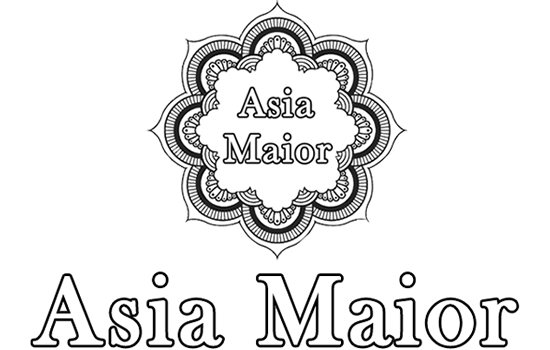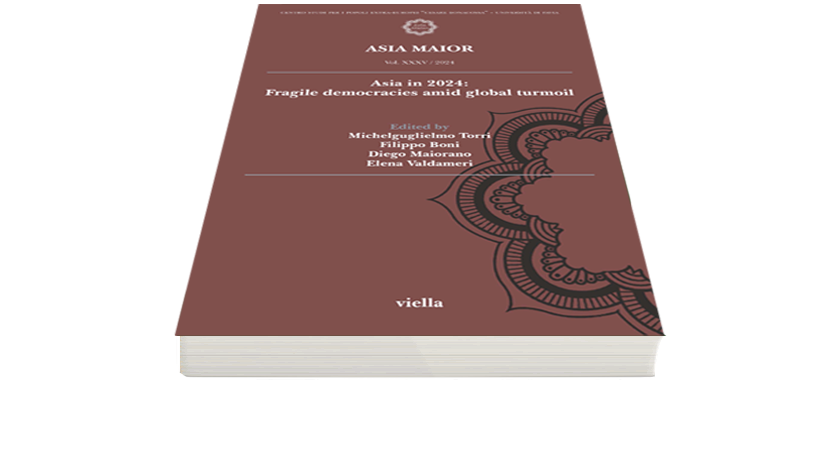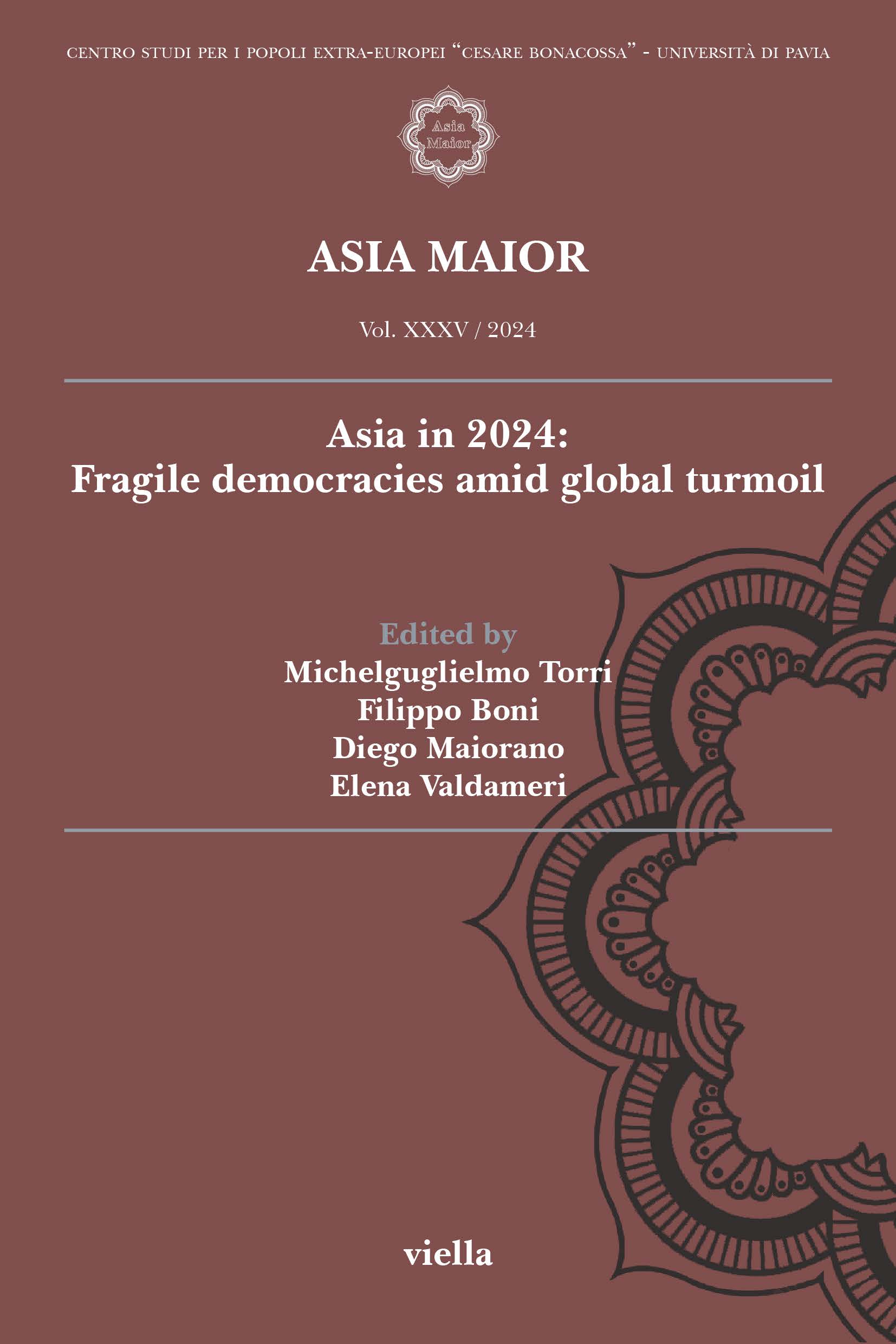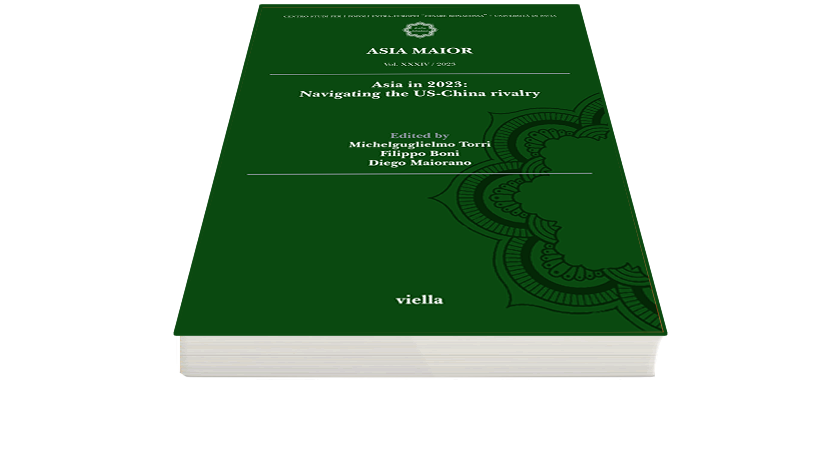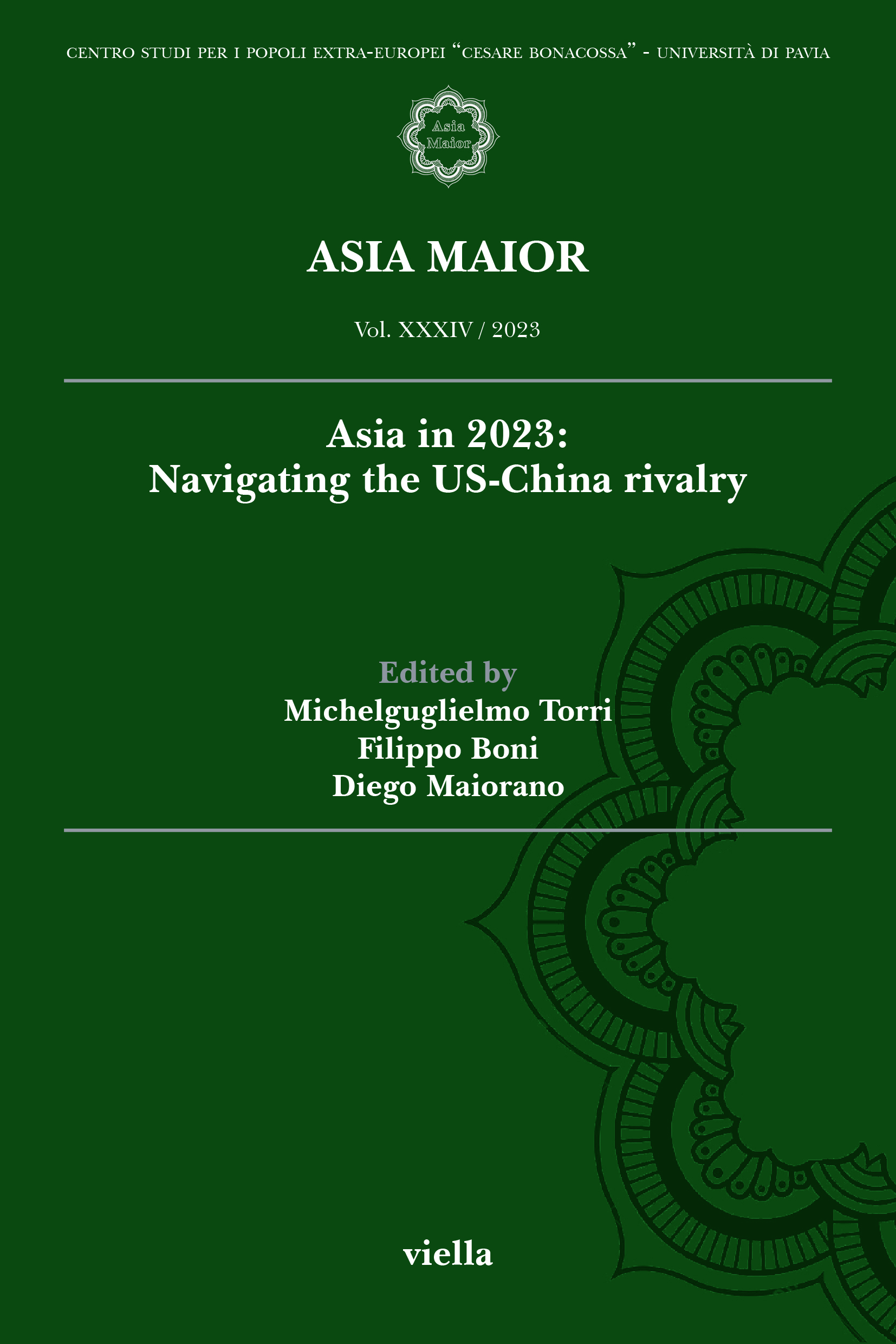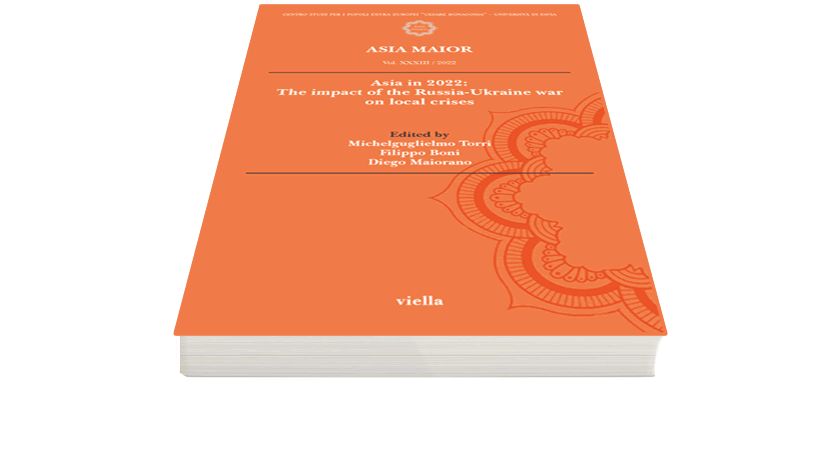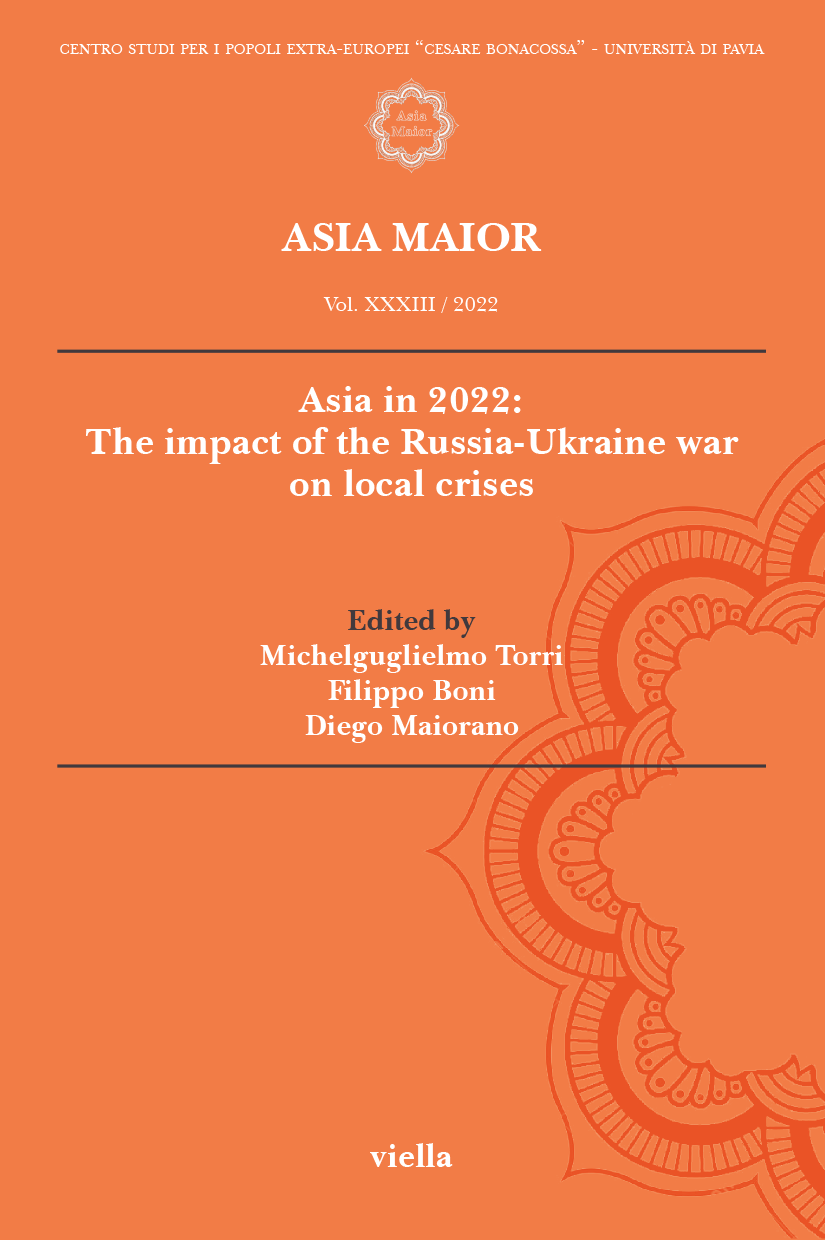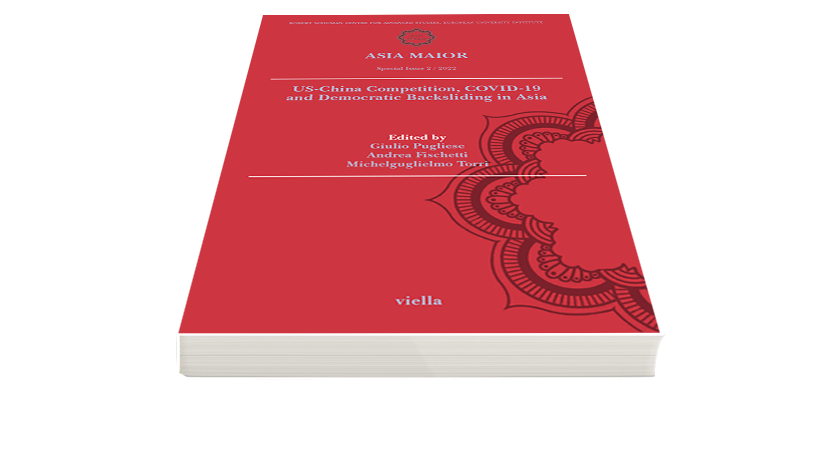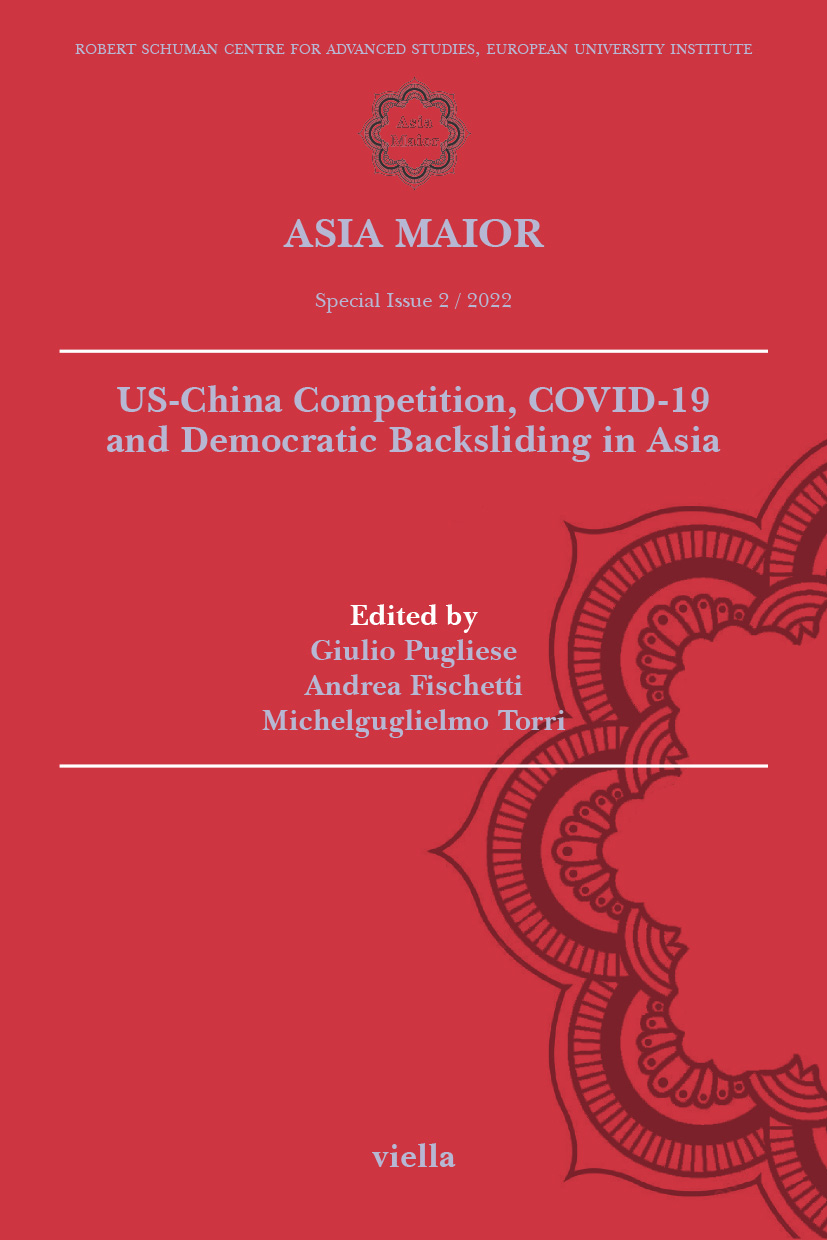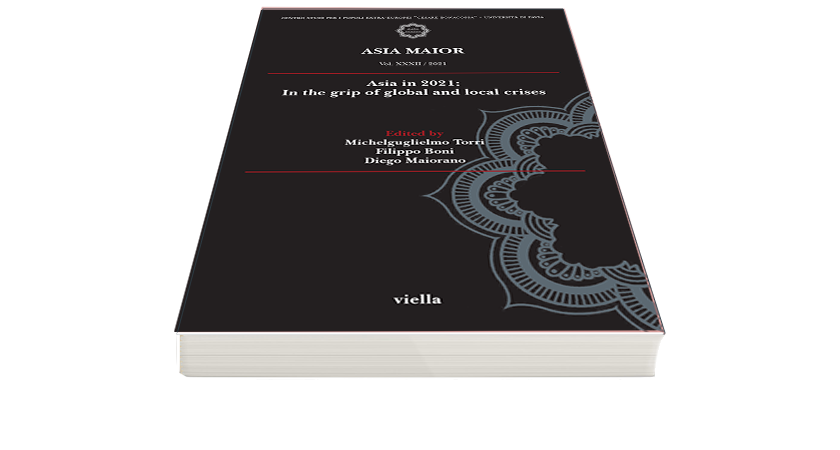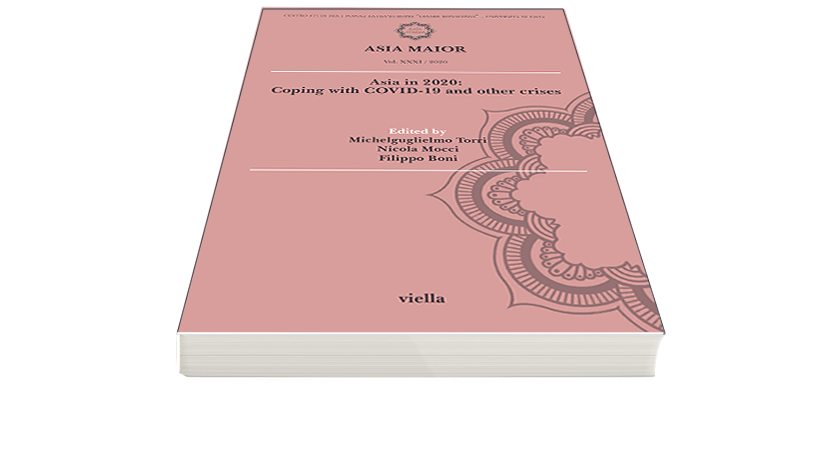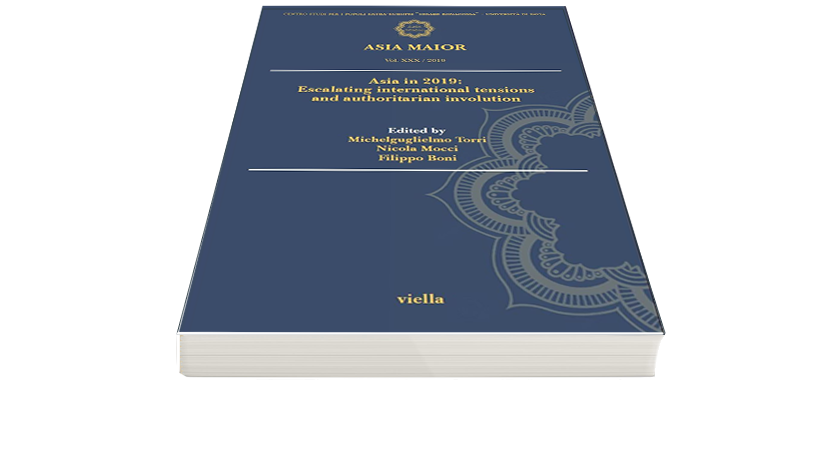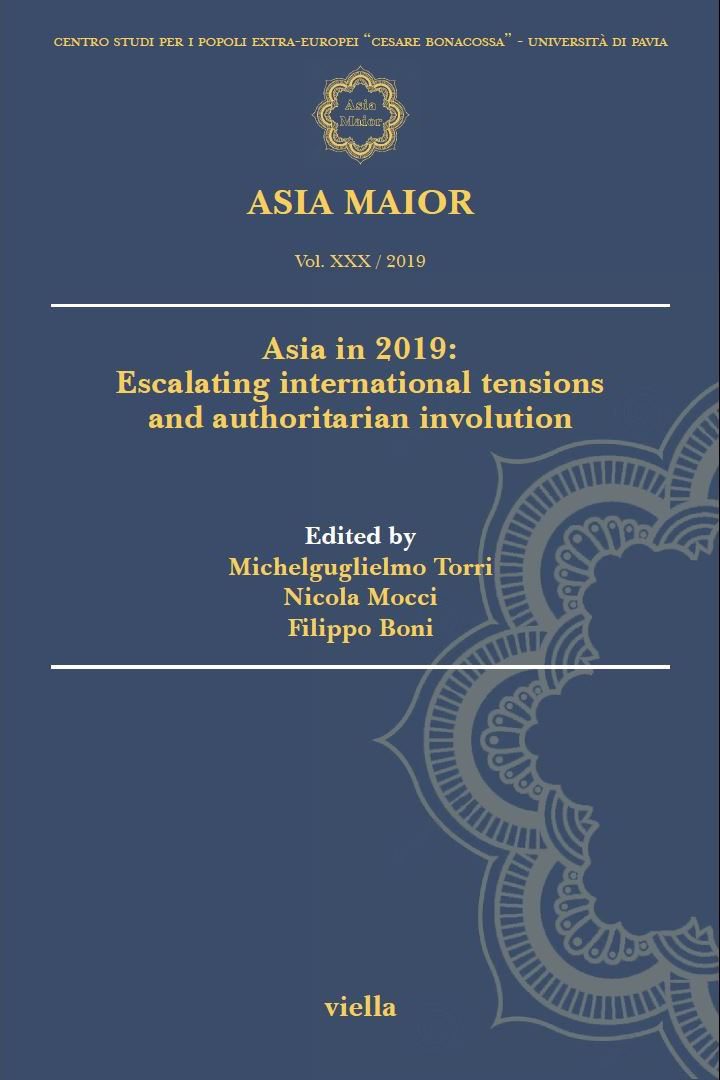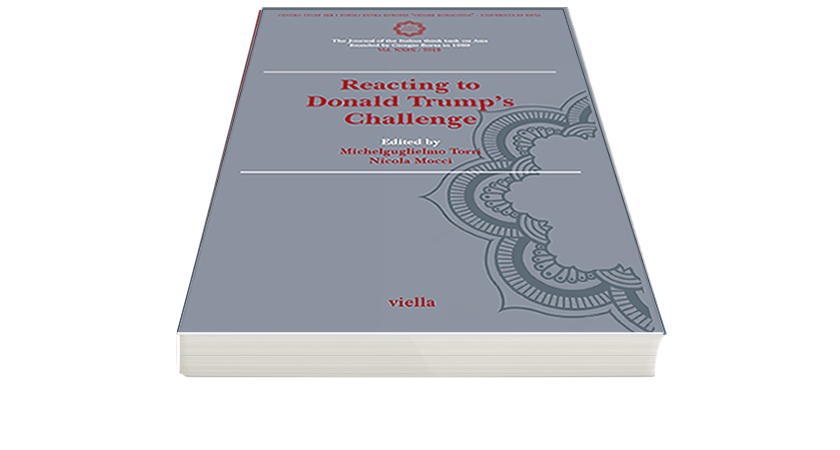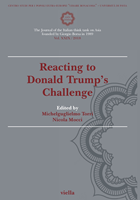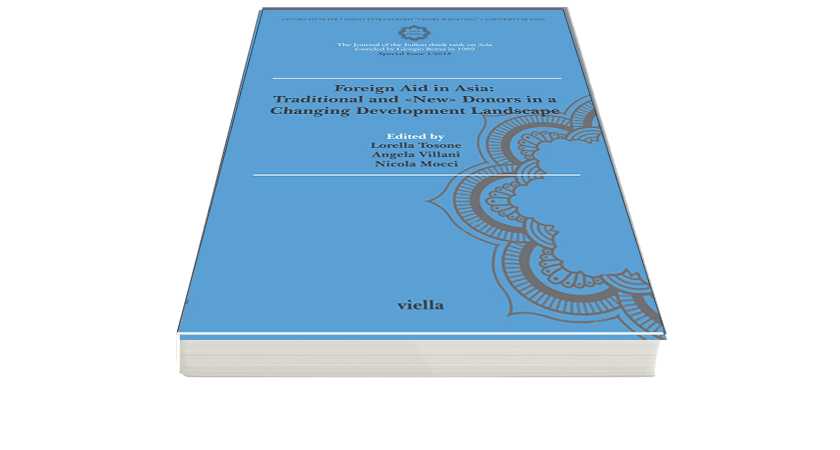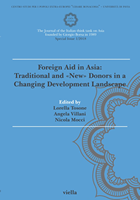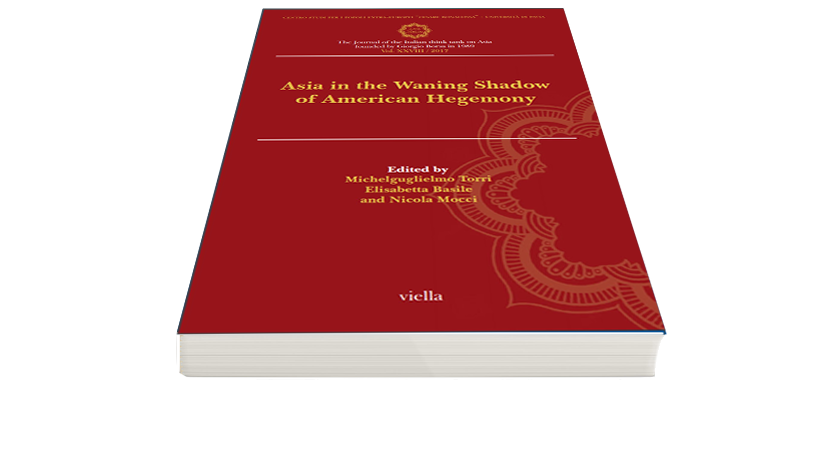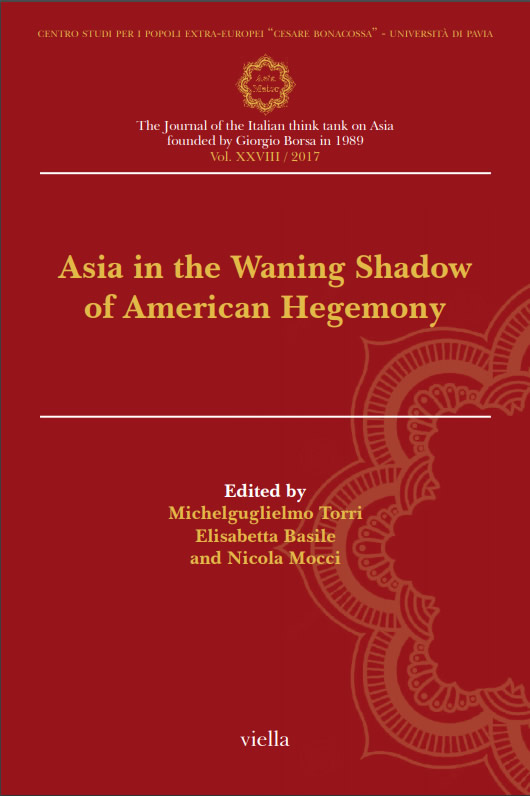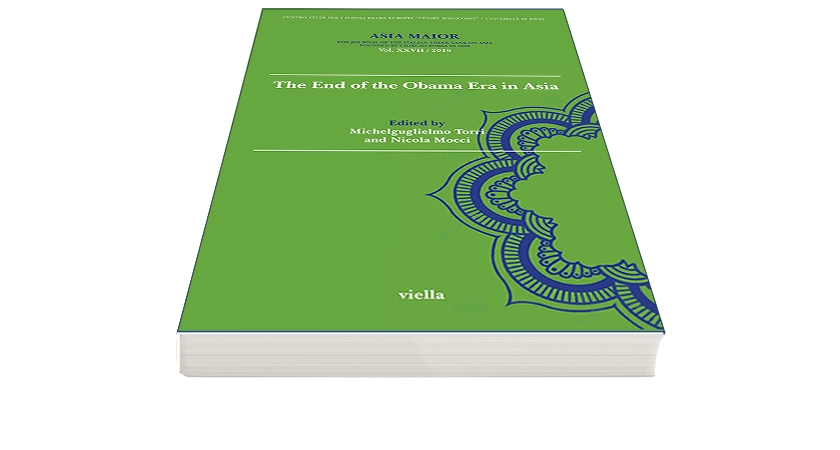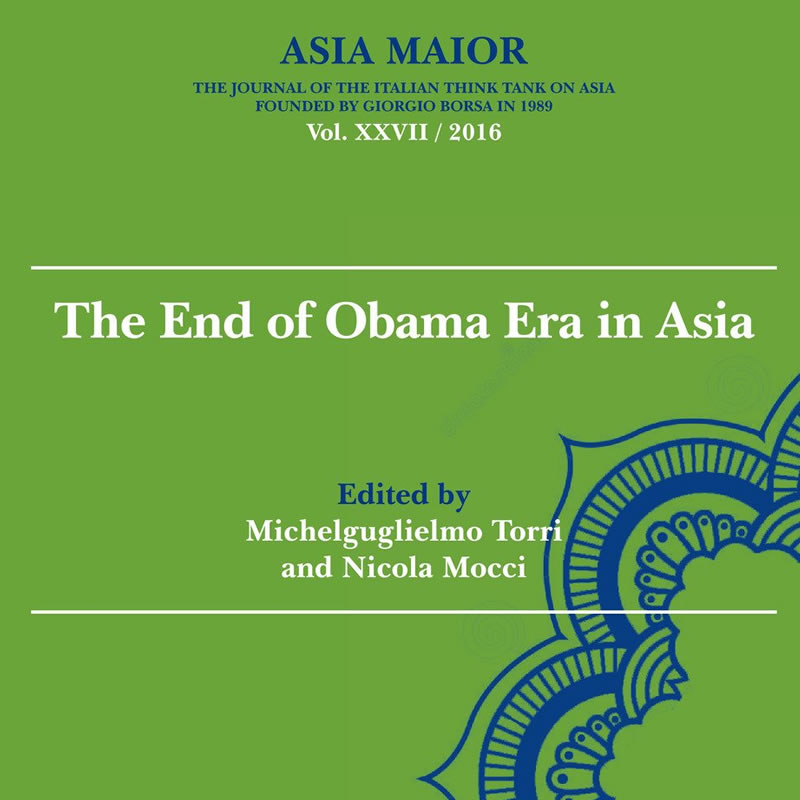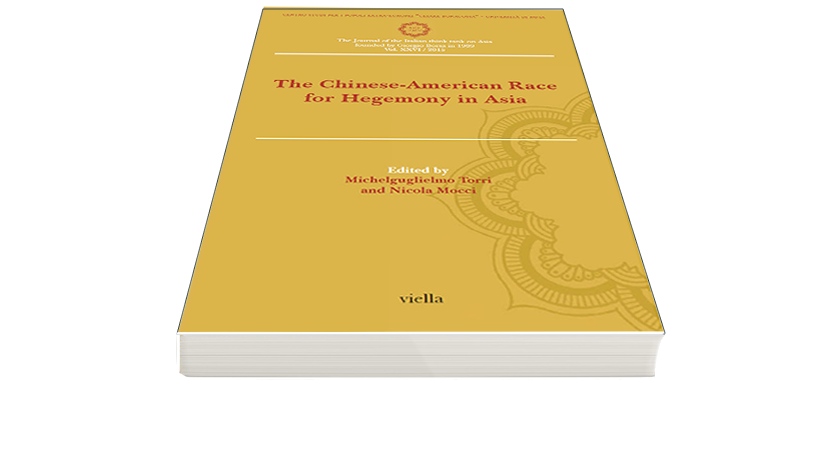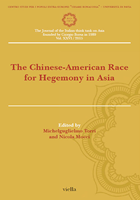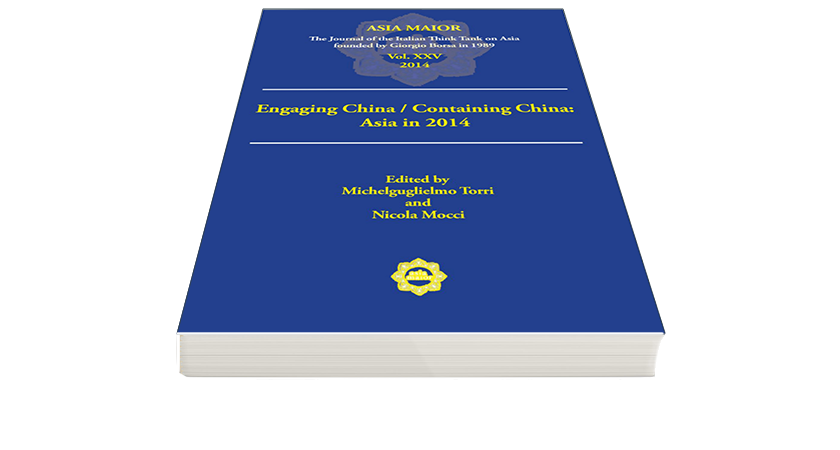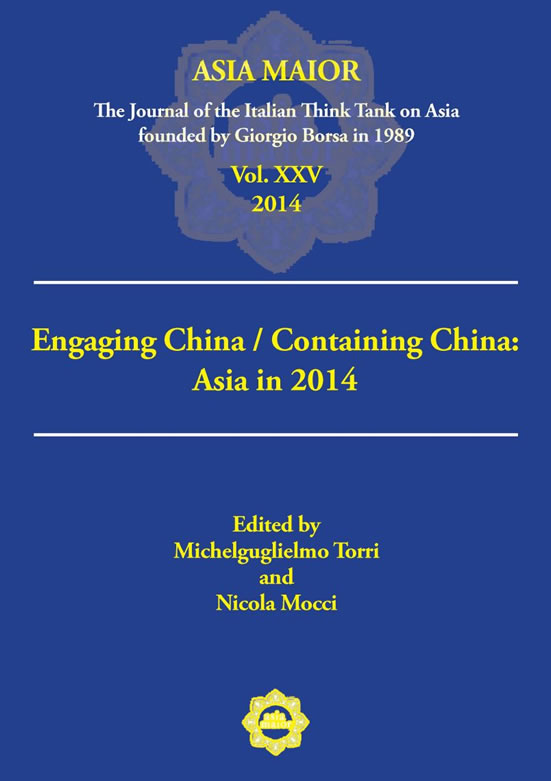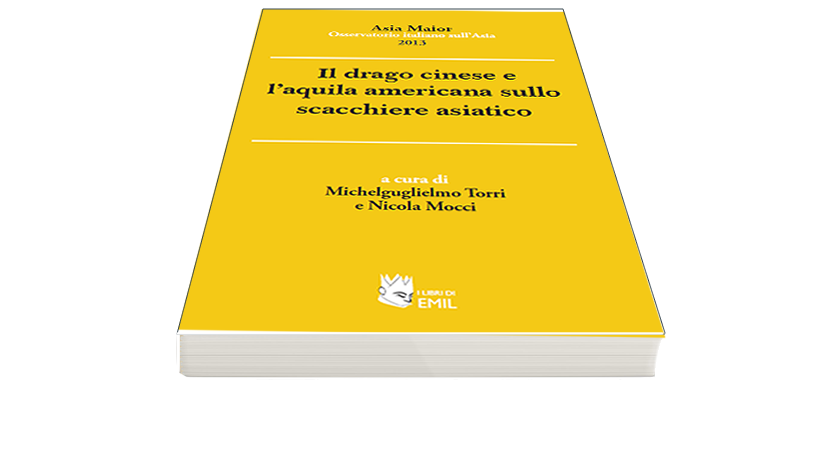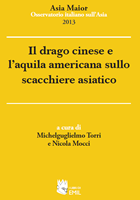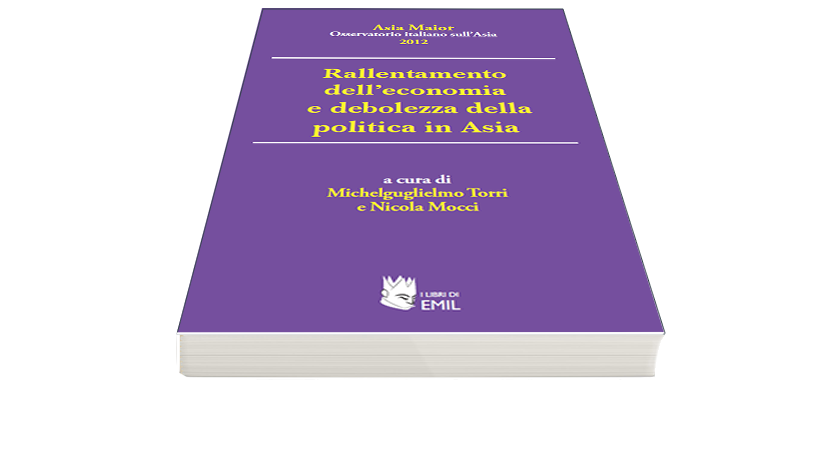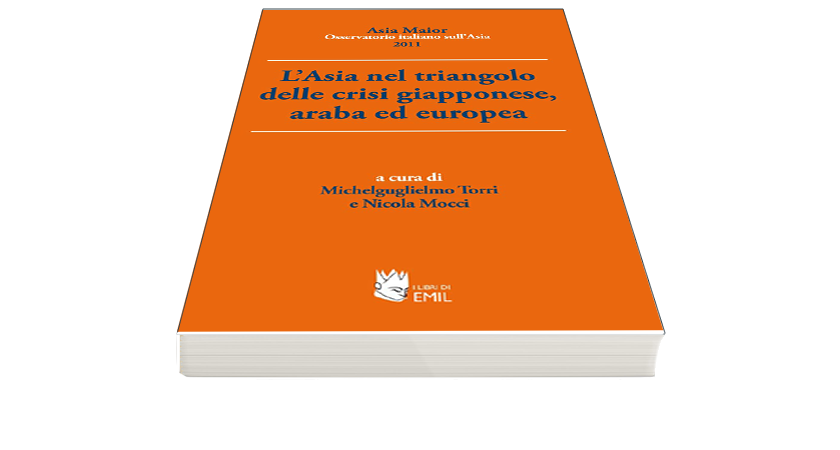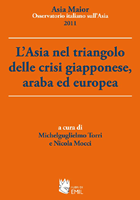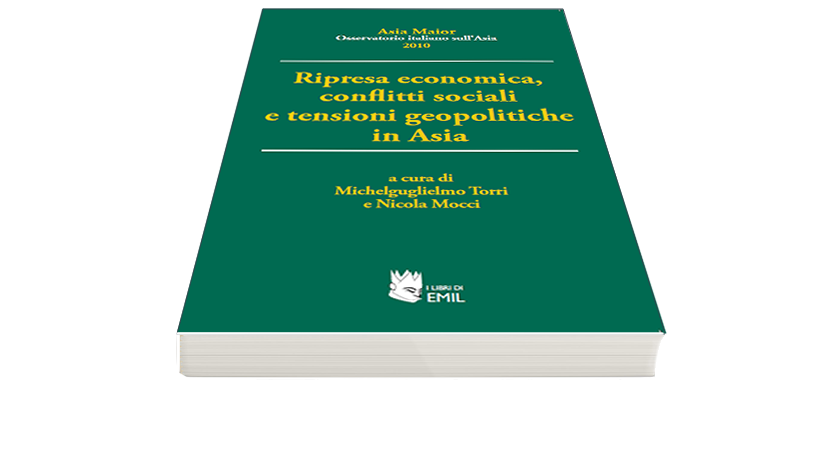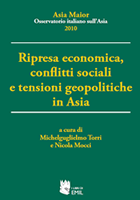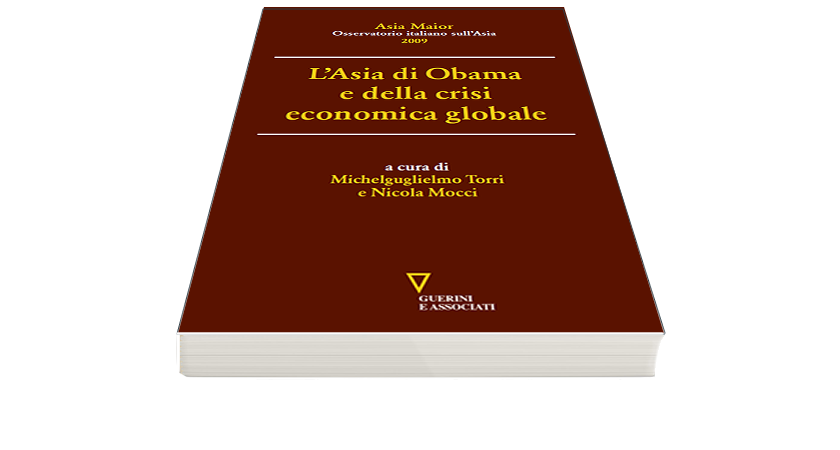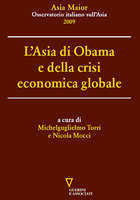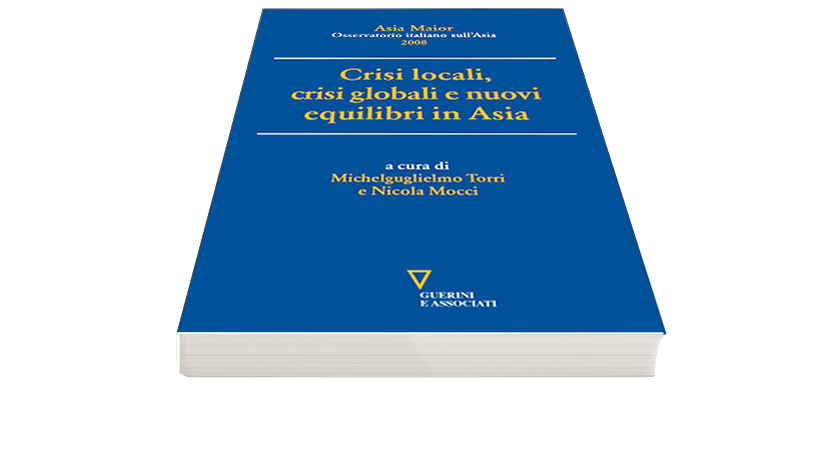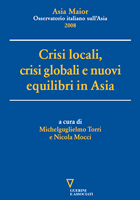Kyrgyzstan 2021-2024: Japarov’s seizure of power amidst structural challenges
This article examines Kyrgyzstan’s key historical and geopolitical features, along with the main political, economic, and international developments during Japarov’s presidency (2021-2024). The analysis contextualises the country’s domestic evolution throughout 30 years of turbulent post-Soviet independence and illustrates its main foreign relations under the slogan of a «multi-vector diplomacy». The article further analyses how under Japarov Kyrgyzstan has rapidly transitioned towards an autocratic model of governance, marked by populist undertones and personalist rule. Three key aspects of Japarov’s domestic governance are examined: the expanding role of security services under his ally Tashiyev; systematic restrictions on media freedom and civil society; and efforts to re-traditionalise national symbols. While the Japarov leadership has implemented economic reforms to strengthen state control over the economy with some success, the Kyrgyz economy remains highly vulnerable to international fluctuations, as witnessed by its dependence on remittances. Finally, the article explores changes in Kyrgyz foreign policy under Japarov, who has focussed on strengthening relations with Russia and China primarily. This analysis reveals that relations with Russia remain solid despite ongoing changes, while the growing ties with China still present complex challenges.
Keywords – Kyrgyzstan; authoritarianism; Japarov; Russia; China.
1. Introduction
The least populated state in Central Asia, Kyrgyzstan is a mountainous landlocked country, nested between Kazakhstan, Uzbekistan, Tajikistan, and China. As the other states in the region, Kyrgyzstan acquired sovereignty just over three decades ago. However, its history and culture run much deeper, developing at the crossroads of an indigenous, millennia-old nomadic tradition, the Russian imperial domination (1876-1917), the following Soviet century (1917-1991), and various other influences that were drawn into the region by its strategic relevance [Jacquesson 2021].
As it happens, Kyrgyzstan’s peculiarities are often lost within a mainstream discourse that portrays Central Asia as a monolithic entity and only lingers, if anywhere, on Kazakhstan and Uzbekistan – the most prominent states in the region [Omelicheva 2014; Lottholz 2022]. Language barriers, geopolitical dynamics, and the small niche reserved to Central Asia in International Studies further contribute to the scarcity of works produced on Kyrgyzstan.
Yet since its newly found independence, Kyrgyzstan has exhibited distinctive characteristics. At the international level, due to its geographical positioning and with a long border shared with China, Kyrgyzstan has been at the centre of the new patterns of cooperation and competition between Russia and China. Far from being a mere pawn on the Great Powers’ chessboard, Kyrgyzstan has strived to use its limited resources creatively, to balance between different international pressures [Godehardt 2014]. On the domestic front and until 2020, Kyrgyzstan was the one Central Asian state embarking on a democratic trajectory, up to being labelled an «island of democracy» in the region. Although there has been no shortage of political turbulence over the last thirty years, the country allowed for active political opposition, a pluralistic media landscape, and a vibrant civil society [Nourzhanov & Peyrouse 2014].
In 2020, however, Kyrgyzstan entered into a new phase of authoritarianism. In October that year, opposition parties denounced as fraudulent the outcomes of parliamentary elections, which saw the significant victory of the pool of social-democratic parties supporting then-President Jeenbekov; as a result, violent street demonstrations erupted in the capital, Bishkek [Radio Free Europe/Radio Liberty 2020, 4 October]. The most radical members of the protest attacked the White House, stormed the prison to free Sadyr Japarov – a popular and charismatic opposition leader – and hailed him as Kyrgyzstan’s future president. Legitimised by new elections in January 2021, Japarov and his most important political ally Tashiyev (head of the State Committee for National Security and deputy head of the cabinet of ministers) have since dominated the Kyrgyz political scene. Over the last four years, they have imprinted a decisive authoritarian drift to the country’s governance system.
In light of the above, this article pursues two main objectives. First, it sketches the main features of the historical and geopolitical context that surrounds Kyrgyzstan. This is particularly important given that no prior article on Kyrgyzstan has been published in the pages of Asia Maior. Section two is devoted to such objective. Then, we will analyse the main political, economic and international developments that have characterised Japarov’s presidency (2021-2024). In particular, section three delves into Kyrgyzstan’s domestic politics, providing an assessment of the most significant reforms and changes introduced by President Japarov and his government. It also examines the country’s main economic data, policies, and trends. Section four overviews Kyrgyzstan’s most recent foreign policy decisions. Besides questioning whether Bishkek still pursues a «multi-vector diplomacy», the article dives deep into a key contemporary dynamic: the «three game» among Kyrgyzstan, Russia, and China. The concluding section summarises the main findings and analyses possible developments over the near future.
2. Historical and geopolitical background: Kyrgyzstan before the Japarov presidency
The territory of present-day Kyrgyzstan has experienced a complex historical trajectory marked by successive waves of conquest, migration, and cultural transformation. While some historical accounts simplicistically suggest that the region once fell under the dominion of the Achaemenid, Seleucid, and Parthian Empires, such claims must be approached with caution. These empires were primarily centred in West and Southwest Asia, and their influence on the territories of modern Kyrgyzstan, if any, was likely limited and indirect – facilitated more through transregional trade routes, such as the Silk Road, than by direct administrative or military control. Nevertheless, the region’s strategic location along these routes rendered it a site of cultural and commercial exchange across Eurasia [Beckwith 2009].
In the early medieval period, Central Asia became a dynamic arena for the expansive movements of Turkic-speaking peoples, as well as Arab and later Uyghur populations. These interactions contributed significantly to the gradual Islamisation of the region [Barthold 1956]. The ethnonym «Kyrgyz» has traditionally been associated with a confederation of forty nomadic clans, said to have been unified under the legendary hero Manas. While the Epic of Manas constitutes a foundational narrative of Kyrgyz national identity and holds considerable cultural significance, scholarly consensus regards Manas as a mythological rather than historical figure. Furthermore, the supposed etymological connection between the term «Kyrgyz» and the number forty remains debated and unsubstantiated within historical linguistics [Gullette 2010].
Following the Mongol conquest of 1207, the region came under the rule of the expanding Mongol Empire but, in the post-Mongol era, experienced intermittent autonomy under various tribal confederations while facing frequent incursions by neighbouring powers, including the Kalmyks, Manchus, and Uzbeks. By the early eighteenth century, portions of present-day Kyrgyzstan fell under the authority of the Uzbek Khanate of Kokand (1709–1876). However, this control was neither territorially uniform nor politically uncontested [Golden 2011].
Kyrgyzstan’s modern history is inseparable from Russian imperial and Soviet rule. The region was incorporated into the Russian Empire in 1876, initiating a period of profound transformation. Russian colonisation significantly altered local population’s lifestyle, weakening the nomadic tradition while selectively preserving certain cultural and religious practices. The influx of Russian and other Slavic settlers, who were frequently granted access to the most fertile lands, exacerbated tensions within the local population. These tensions culminated in the 1916 uprising, which was triggered by Tsarist policies mandating the conscription of Central Asian men into labor battalions to support the Russian was effort in World War I. The revolt was brutally suppressed, resulting in mass casualties and forcing many Kyrgyz to flee to neighboring Afghanistan and China [Chokobaeva 2014]. Following the Russian Civil War, the region was gradually absorbed into the Soviet state. However, it is important to clarify that a distinct Kyrgyz state did not exist prior to the Soviet national delimitation process of the 1920s and 1930s. It was through this process that the Kyrgyz Autonomous Oblast was established in 1924, later upgraded to an Autonomous Soviet Socialist Republic in 1926, and finally to the Kyrgyz Soviet Socialist Republic in 1936.
The early Soviet period was marked by sweeping policies of collectivisation and political repression, particularly during the 1930s. These policies brought severe hardship to the local population, including widespread famine, forced sedentarisation of nomadic groups, and purges of intellectuals and political elites. Despite these disruptions, the Soviet era played a central role in shaping Kyrgyz statehood and initiating structural development. Under the leadership of Razzakov – who served as head of government in 1945-1950 and secretary of the Kyrgyz Communist Party between 1950 and 1961– important industrialisation policies were initiated in the mining, energy, and transportation sectors, in addition to modernising agriculture [Boron 2024]. Two additional aspects characterised this era: the evolution towards greater religious tolerance of Islam, following the initial persecutions of the 1920s and 1930s; and cultural development. In the 1940s and 1950s, a universal secondary education system was introduced, the Academy of Sciences was founded, and the country’s first universities were established, including the Kyrgyz State University [Chotaeva 2016].
The first among Central Asian states to declare independence from the Soviet Union on 31 August 1991, Kyrgyzstan was the only country in Central Asia to elect a new President, Akayev, who was not a direct expression of the country’s communist party. In this atypical transition, the new Kyrgyz national identity was shaped by Kyrgyz demands for ethnically-based nationalism, on the one hand, and the desire of ethnic minorities – including many Russified Kyrgyz – to maintain the civic nationalism that had been a hallmark of Soviet identity, on the other hand [Huskey 2003] This tension played out in language policy, where Kyrgyzstan chose a compromise: Kyrgyz became the state language while Russian retained official language status. Additionally, the relatively liberal policies promoted during Akayev’s fifteen-year presidency (1991-2005) contributed to giving the country a pluralistic socio-political landscape and initiating a small, albeit weak, market economy.
This notwithstanding, post-Soviet Kyrgyzstan has experienced a fair share of turbulences throughout its 30 years of independence [Laruelle & Engvall 2015]. It is worth noting that, of the six Presidents who have governed Kyrgyzstan since its independence (namely Akayev, Bakiyev, Otunbayeva, Atambayev, Jeenbekov, and Japarov), half of them have taken or lost power as a result of protests in Bishkek – such as the Tulip Revolution of 2005, the April People’s Revolution of 2010, and the political upheaval of October 2020 [Ivanov 2022]. Each turning point brought with itself significant institutional changes, but notable differences set these events apart. To begin with, the Tulip Revolution saw opposition leaders call for uprisings, united by the objective of ending Akayev’s fifteen-year presidency.1 His successor was identified in a consensus figure, Bakiyev, then leader of the People’s Movement of Kyrgyzstan. However, Bakiyev soon proved more interested in marginalising his opponents rather than protecting political pluralism, and soon established himself as the country’s new autocrat. The Revolution of April 2010, conversely, emerged as a series of spontaneous and violent demonstrations, with opposition party leaders participating only at a later stage. Once in power, they promoted a constitutional reform that attributed centrality to the parliament, guaranteeing freedom for all political parties to participate in the elections. The reform also set a six-year limit to the presidential term [Marat 2016].
Indeed, in the ten years following these reforms (2010-2020), Kyrgyzstan was characterised by particularly vibrant parliamentary dynamics, such that both the 2010 elections and the subsequent 2015 elections were unpredictable in their outcomes. Finally, the October crisis in 2020 saw a combination of spontaneous protests and organised participation by opposition leaders [Doolotkeldieva 2021, 2023]. The reasons for unrest were rooted in three factors: inadequate management of the Covid pandemic by official authorities, the growing power of organised criminal groups, and President Jeenbekov’s underestimation of the crucial role of elections in the Kyrgyz context [Bawa & Singh 2022]. Japarov, emerging as the new leader, demonstrated that he had learned lessons from both the 2005 and 2010 revolutions. Although he presented himself as a figure of national unity, he immediately manifested his intention to promote constitutional reforms aimed at strengthening presidential powers [Engvall 2021, 21 January].
In terms of external relations, throughout Akayev’s presidency (1991-2005), Kyrgyzstan implemented a so-called «multi-vector diplomacy» – aimed at balancing between a structural relation with Russia and the cultivation of productive relationships with other international actors, especially the United States and China [Swanström 2014]. The US, for example, maintained a presence in Kyrgyz territory through the Manas air base in Bishkek, operational from 2001 to 2014 [Wang 2019]. Although in the first decade of the new millennium the dynamics of great power competition appeared to be quite strong in this part of the world [Kim & Indeo 2013], a decade later the gradual abandonment of the Afghan dossier by the United States caused Central Asia, including Kyrgyzstan, to descend in Washington’s priority list, determining the descalation of tensions among great powers [Leksyutina 2024]. Moreover, the global economic crisis of 2008-2009 severely affected the weak Kyrgyz economy through reduced foreign investment and falling commodity prices. This economic vulnerability represented a crucial turning point for the projection of a greater economic presence of Russia and China in the region [Yau 2020, 17 September].
In the mid-2010s, both Russia and China developed various instruments to increase their engagement with the area. Russia focused on economic and security structures, and promoted the Eurasian Economic Union (EaEU)– which Kyrgyzstan joined in 2015– as part of its effort to consolidate regional economic integration. In the security domain, Russia had already re-established its military footprint in Kyrgyzstan in 2003, through the Kant air base, which it continued to develop as a key outpost under the framework of the Collective Security Treaty Organisation (CSTO) [Dzhuraev 2022, 30 August]. For its part, China launched the Belt and Road Initiative (BRI). The launch of the BRI in 2013 coincided for Kyrgyzstan with a visit by President Xi (September of the same year) during which the parties elevated their relations to the status of «strategic partnership» [MOFA of the PRC 2013]. In terms of timing, it is therefore unsurprising that Kyrgyzstan’s accession to the Chinese project was almost immediate, taking place in December 2013.2 Within this framework, it is important to note that already during the 1990s, and throughout the 2000s, Beijing already provided substantial economic incentives and concessional loans for infrastructure projects in Bishkek in exchange for adherence to its security objectives [Chokobaeva & Ninnis 2014].
3. 2021-2024: Kyrgyzstan’s authoritarian drift and vulnerable economy
Having sketched a brief political history of Kyrgyzstan, the article now moves on to more recent developments, focussing on the first years of Japarov’s presidency (2021-2024). In particular, this section discusses the main domestic political developments and economic trends. It will emerge clearly that, under Japarov, the country rapidly slid towards an autocratic model of governance, characterised by populist undertones, personalist rule, and a gradual crack down on freedom of expression. Economically, Bishkek appeared more interested in granting stability rather than promoting development – a policy choice shared across Central Asia and autocratic regimes at large. The main macroeconomic indicators show a positive trend, but structural challenges persist.
3.1. Domestic politics
Japarov’s first years in power have been characterised by authoritarian reforms and populist overtones. The most significant event was a constitutional referendum held in April 2021, which ushered into the restoration of a presidential system after a decade of parliamentarism. The new Constitution significantly expanded the powers of the president, eliminating the previously established one-term limit and several other checks-and-balances [Government of Kyrgyzstan 2021, 11 April]. In this process, both local officials and the parliament were stripped of autonomy and authority. While the former are now directly appointed by the president, the latter cannot «speak on behalf of the people anymore» – as the Deputy Chairman of the Cabinet of Ministers, Edil Baisalov, put it [Masalieva 2023, 21 June]. Furthermore, the new Constitution contained numerous vague and primordialist concepts — such as rule of people, spiritual and cultural values — and concealed an integrated system of censorship, contemplating the possibility of prohibiting events to protect traditional moral values [Toktogazieva 2021, 7 April]. The speed and way this new Constitution was adopted highlighted the persistent fragility of Kyrgyz national institutions, judicial system included. Later in 2021, parliamentary elections saw the majority of votes cast in favour of pro-Japarov parties – thereby strengthening the latter’s control [Central Commission for elections and referendums of the Kyrgyz Republic 2021, 15 December].
Three further elements have characterised Japarov’s presidency so far: the increasing centrality of security services, particularly the State Committee for National Security, led by the President’s closest ally Tashiyev; the crack-down on media freedom and civil society [Radio Free Europe/Radio Liberty 2024, 10 October]; and the re-traditionalisation of national symbols [Bekmurzaev 2023, 21 December].
The enhanced importance of security services has manifested in the killing and imprisonment of various actors, from political opponents to organised crime figures. For instance, in September 2023-March 2024, crime boss Kolbayev was killed while broker Matraimov and nationalist Maduramov were arrested [24.kg 2024, 26 March]. In some cases, the Japarov-Tashiyev duo appears to have employed a «catch and release» tactic to intimidate the opponents and restrict dissent; with increasing intensity since 2023, numerous arrests have been made of individuals allegedly suspected of planning coups, who were subsequently released [Government of Kyrgyzstan 2024, 12 November]. More recently, the arrest of the Social Democratic Party leader Sultanbekov on vote-buying corruption charges has caused controversy [Government of Kyrgyzstan 2024, 14 November].
By leveraging power structures, the Japarov-Tashiyev tandem has also consolidated its patron-client network and granted greater financial inflows in support of state and private activities. A flagrant example of this falls under the label of «kusturizatsia»: branded as an anti-corruption initative, de facto it is tantamount to state-led extorsion [Ismailbekova 2024]. The practice of kusturizatsia allows corrupt officials and businesses to make amend for their crimes by paying a fee to the regime or ceding control over illicit resources to the tandem. Far from being implemented in a transparent manner, this practice ends up institutionalising corruption and informal networks, to the detriment of healthy business practices.
Kyrgyz media, which had distinguished themselves in the region for plurality and freedom, have also been subject to persecution by the secret services and state institutions at large. Since the inception of Japarov’s presidency, a Law on «Mass Media», a Law on «Protection from False and Inaccurate information», a Law against «LGBT propaganda» and changes to the Law on «Non-Commercial Organizations» have been emanated, providing the legal background for the repression of free press and public gatherings [Radio Free Europe/Radio Liberty 2023, 14 August]. In September 2024, the Ministry of Culture issued a formal warning to Radio Free Europe’s Kyrgyz branch for allegedly spreading false information; during the same period, the Supreme Court upheld the decision to dissolve the public foundation behind Kloop, an investigative news agency [Committee to Protect Journalists 2024, 29 August]. A group of journalists working for Temirov Live channel was convicted in October 2024 on charges of inciting public disorder [Organized Crime and Corruption Reporting Project 2024, 11 March]. Notably, since March 2022 Bishkek has issued a ban on public protests, following pro-Ukrainian demonstrations in front of the Russian Embassy.
Increasingly tense relations between official authorities and radical Muslim communities, primarily concentrated in the country’s South, are also worth noting. In 2024, the State Committee for Religious Affairs decreed that religious figures can no longer run in local elections, and religious venues cannot be used for political events without prior approval from authorities. A ban on wearing the Niqab in offices and public places has sparked further tensions [AKI Press 2024, 2 September]. These positions may indicate Japarov’s apprehension regarding the growing support for the Islamic centre-right Iyman Nuru party.
Finally, although older generations still express a certain degree of nostalgia for Soviet times [Ercilasun 2010], President Japarov has initiated a campaign of re-traditionalisation of nationalist sentiments. In January 2024, not without protests, a new version of the Kyrgyz flag was presented, while an update of the national anthem was underway at the closing of this essay, giving less prominence to the independence process of the 1990s in favour of greater emphasis on the millennial history of Kyrgyz culture [Bekmurzaev 2024, 7 November]. Within this process, in July 2024 the President officially recognised five victims of Soviet repression as founders of the modern Kyrgyz state [Kabar 2023, 2 October]. Such decisions took place within a broader effort by Japarov to present himself a «native son» of Kyrgyzstan, respectful of traditional obligations, kinship networks, and the nation’s historical greivances [Ismailbekova 2021].
3.2. Economic policy
Between 2020 and 2023, Kyrgyzstan’s economy experienced significant fluctuations. In 2020, the GDP contracted by 7.15% due to the global pandemic. However, the economy rebounded with growth rates of 5.51% in 2021 and 8.97% in 2022; by 2023, GDP growth slowed to 6.2%. Also GDP per capita saw a recovery from US$ 1,257 in 2020 to US$ 1,970 in 2023. Inflation rates varied, starting at 6.33% in 2020 and peaking at 13.92% in 2022 before easing to 10.75% in 2023 [‘Kyrgyz Republic’].
These changes have taken place within the framework of economic reforms spearheaded by Japarov, focused on two priorities: strengthening state control over the economy and improving fiscal sustainability. Regarding the former, a landmark decision was the nationalisation of the Kumtor gold mine, one of the largest in Central Asia, which initially boosted state revenues but raised concerns about long-term sustainability [Putz 2022, 28 May]. In terms of fiscal policies, a mix of revenue collection and tax enforcement led to a temporary surplus in 2023. However, projections for 2024 indicate a return to a deficit due to large social spending to support key sectors such as agriculture and energy [Balabushko et al. 2024, 7 June].
The Kyrgyz economy was severely affected by the Covid pandemic and Russia’s invasion of Ukraine. Facing these crises, the government implemented price controls and export restrictions on essential commodities, including coal and meat. In particular, the Ukrainian conflict precipitated a severe currency crisis in March 2022, with the Kyrgyz currency (som) depreciating by 30% against major currencies. Subsequently the exchange rate remained rather stable, thought concerns emerged regarding market manipulation and informal currency trading [International Monetary Fund 2024]. A further factor facilitating economic recovery was Bishkek’s readiness to take advantage from Western sanctions on Russia. Leveraging its position as a transit country, Kyrgyzstan has become a hub for the re-export of European goods to Russia and vice-versa, across a variety of sectors that span luxury goods, agricultural products, industrial machinery, and dual-use technologies [Lahiri 2024, 30 September]. This has allowed for a significant 70% increase in EU exports towards Kyrgyzstan during 2021-2023, which coupled with the growth in value of Kyrgyz exports to Russia from US$ 393 million (2021) to US$ 1.07 billion (2022), then peaking at US$ 823 million the following year [Trading Economics; Brooks 2024] .
During the same timeframe, Bishkek has resumed long anticipated infrastructural projects. These include the Kyzyl-Ompol titanium-magnetite project in the Issyk-Kul region, the Uzbekistan-financed auto assembly plant in Northern Kyrgyzstan and the implementation of two solar power plant projects in the country’s Batken and Talas regions [Government of Kyrgyzstan 2024, 30 September]. More recently, Kyrgyz officials have publicly stated that the work on building the long-planned BRI project, the China-Kyrgyzstan-Uzbekistan railway, is scheduled to begin construction. A wind farm investment agreement has been reached with Russia’s Rosatom [‘Rosatom Renewable Energy’ 2024, 23 December], adding to the many transport and energy projects already under way.
Against such generally positive background, structural challenges continue to affect the Kyrgyz economy. By the end of 2023, the country’s public debt reached 60.3% of its GDP – with China remaining the largest creditor, holding 40% of the external debt [International Monetary Fund 2024]. In addition, Japarov’s administration has experienced difficulties balancing social welfare commitments with the need to attract foreign investment and improve economic transparency [OECD 2023, 13 December]. Moreover in 2024, the country’s energy sector experienced challenges. Due to rising costs and supply shortages, Kyrgyzstan’s dependence on regional imports increased significantly, with trade volumes rising by 28% from neighbouring countries in 2023-2024. Kazakhstan became the largest source of imports (35%), followed by Russia (27%) and Uzbekistan (22%) [Cornell and Shaffer 2024, 4 December]. Finally, the economy remains dependent on gold exports, a growing tourism sector, and remittances from migrant workers in Russia. In the context of tourism, the government enacted measures to liberalise investment regulations in the vicinity of the Lake Issyk-Kul region. This enabled foreign nationals to purchase recreational facilities, while maintaining restrictions on land ownership [Government of Kyrgyzstan 2023, 14 August]. Remittances have remained a crucial part of the economy, contributing around 20.4% of GDP in 2023. However, their share of GDP has fallen considerably since 2021 (32.6%), largely due to a reduced migrant workforce in Russia (see next section).
4. Kyrgyzstan’s evolving foreign policy under Japarov
Under Japarov, Kyrgyzstan’s «multi-vector diplomacy» was significantly recalibrated, refocussing primarily on strengthening relations with Russia and China. Bishkek continued to engage pragmatically with other actors — as evidenced by the signing of an «Enhanced Partnership and Cooperation Agreement» with the European Union in July 2024 and a series of strategic agreements with Turkey; but Kyrgyzstan’s primary diplomatic focus has narrowed, compared to before 2021. This reorientation is particularly evident when looking at the participation of Bishkek in various multilateral fora – with Kyrgyzstan playing an active role predominantly within the Central Asian Heads of State Summit, the BRICS group, the Russian-led Commonwealth of Independent States (CIS), and the Chinese-led Shanghai Cooperation Organisation (SCO). President Japarov’s speeches at recent gatherings of these forums have underscored this strategic realignment [24.kg 2023, 19 May; 24.kg 2024, 24 May]. At the regional level, significant progress has been made in border demarcation agreements, with Kyrgyzstan signing treaties with Uzbekistan in January 2023 and Tajikistan in September 2024 [Imanaliyeva 2023, 27 January; Government of Kyrgyzstan 2024, 4 December]. Given the strengthening of ties with Russia and China in recent years, the remainder of this section provides an analysis of Kyrgyzstan’s relations with these two powers.
4.1. Changing but solid: Kyrgyzstan-Russia relations
Japarov’s rise to power was originally looked at with scepticism by the Kremlin, which granted generous support to his predecessor. Japarov did not have any meaningful pre-existing ties with Moscow, and the way he ascended to power triggered Russian anxieties of a new «colour revolution». Notably, the Kremlin did not invite Japarov to the 2021 Victory Day celebrations in Moscow, while extending a formal invitation to the President of Tajikistan, who was the only Central Asian leader officially in attendance. In a context where border clashes between Kyrgyzstan and Tajikistan had just reignited, such choice resonated in Bishkek as a clear message of disapproval. In retribution, Japarov did not attend a series of Commonwealth of Independent States (CIS) and Collective Security Treaty Organization (CSTO) events throughout 2022 [Mashrab 2023, 1 June].
This rough start, however, did not compromise relations irredeemably. Several statements from both sides have stressed the desire to hold mutually beneficial relations. Since the onset of his term, Japarov has emphasised the importance of Russia as Kyrgyzstan’s main strategic partner, particularly in the security domains [Sharshenova 2021, February]. Likewise, the Kremlin has tributed Bishkek with high regards, showing its appreciation for Japarov’s work to grant stability to his country, and often referring to Kyrgyzstan with words belonging to the semantic group of «family» and «friendship» [Keyword search]. Rhetoric aside, two main factors contributed to the stabilisation of bilateral relations.
First, Russia’s deep penetration into Kyrgyzstan’s social, political, and economic spheres forced Bishkek to downsize its criticism of Moscow. Russia remains Kyrgyzstan’s main trade partner and source of foreign direct investment [Data]. The Russia-Kyrgyzstan Development Fund continued pumping Russian money into a range of local projects. Moscow owns Kyrgyzstan’s principal gas company, is the main supplier of oil products and operates in the country with more than 800 companies. Notably, Kyrgyzstan’s GDP is composed up to one third by the remittances of migrants working in Russia [International Monetary Fund 2024]. Furthermore, Russia maintains a military presence in Kyrgyzstan through the Kant Air Base, which hosts the air component of CSTO’s Collective Rapid Deployable Forces. Together with the base in Tajikistan, the Kant infrastructure grants Russia a power-projection foothold in the wider Central Asian region, up to the Middle East. It also reassures Kyrgyzstan vis-à-vis potential domestic and international threats, while facilitating the training of Kyrgyz armed and security forces by Russian specialists. Finally, Kyrgyzstan is kept steadily within the Moscow-centred russkij mir (Russian world) from a cultural perspective. A host of public diplomacy initiatives, encompassed by the Russian colonisation of the Kyrgyz media space, contribute to keeping societal relations tight; institutions such as the Coordination Council of Russian Compatriots in Kyrgyzstan provide platforms for consolidating a positive image of Russia.
Second, from the Russian side, the repercussions of the invasion of Ukraine in February 2022 imposed the need to foster new relations across the Global South, while reinforcing ties with traditional partners [Averre & Fasola 2024, May]. In Central Asia, Russia’s war-mongering behaviour raised diverse reactions, with Kyrgyzstan being a peculiar case [Arynov & Sharipova 2024]. In February 2022, Japarov made cautious statements about the outbreak of the war, emphasising that «Perhaps [the Russian invasion] was a forced measure to protect the peaceful population of the territories of Donbas, where a large number of Russian citizens live» [Japarov 2022, 22 February]. He also declared Kyrgyzstan was ready to stand by Moscow «for 300 more years» [Radio Free Europe/Radio Liberty 2023, 20 August]. One month later, when it became clear that Russia would not achieve a swift victory, Bishkek declared its neutrality [24.kg 2022, 9 March]. Though the Kyrgyz population seemed not to blame Russia for the war [Chapman & Zhandayeva 2023], the volatility of Japarov’s position reconfirmed the urgency to Moscow to reinforce its authority in the country. Consequently, Russia doubled down on its diplomatic efforts. Almost all members of the Russian Security Council have visited Central Asia since 2022 and Putin personally visited all five countries in 2023 – for the third time since he became president. Notably, Putin’s trip to Kyrgyzstan in October 2023 marked his first foreign visit since the International Criminal Court (ICC) issued a warrant for him, thereby sending a clear message of pacification to Bishkek. Besides reconfirming economic and security ties, Moscow has increased its support in the socio-cultural field. In early 2024, Russia announced plans to construct nine Russian-language schools in Kyrgyzstan by 2029, at an overall cost of US$ 5.5 million [TASS 2024, 16 October].
Overall, Russia appears to have strong «staying power» in Kyrgyzstan. However, two critical issues might impact the relationship between Moscow and Bishkek. First, since the Ukraine war and especially due to the terrorist attacks in Moscow (Krokus City Hall, March 2024; killing of General Kirillov, December 2024) – both allegedly involving Central Asian citizens – a new wave of discrimination has impacted on Russian relations with the region. As a security measure, Russia has decided to limit free movement within the Eurasian Economic Union (EaEU), banning many Central Asian migrants, including Kyrgyz ones, from entering Russia and further complicating bureaucratic procedures for legal work. Moreover, labour migrants from Central Asia are also experiencing a new wave of police abuse [Pannier 2024, 13 August]. As a consequence, Central Asian migrants have become more exposed to poverty, crime, and radicalisation, and for many Kyrgyz people Russia is not a viable work destination anymore. Bishkek estimated that about 587.000 Kyrgyz citizens lived and worked in Russia in 2022; by the summer of 2024, that number had gotten down to 411.000 individuals [Rickleton 2024, 18 December]. Should this trend continue over the long term, not only the role of Russian remittances in the Kyrgyz economy would shrink, but also the social bond between Russia and Kyrgyzstan could weaken.
Second, the Ukraine war facilitated the spread of a powerful decolonisation narrative across Central Asia. For instance, Kyrgyz and Kazakh elites have made public attempts to move the narrative of the Great Patriotic War away from its traditional Russian focus, underlining the sacrifice of their peoples, too. In the summer of 2024, Kyrgyzstan announced the demolition of the Soviet-era Panfilov Division Museum – provoking Russian ire, albeit the monument had been abandoned decades earlier [Radio Free Europe/Radio Liberty 2024, 13 October]. Most notably, Kyrgyzstan’s National Commission for the State Language and Language Policies recently announced that Kyrgyzstan could switch from Cyrillic to the Latin alphabet. Perceived as a move to distance Kyrgyzstan from Russia, Moscow retaliated by suspending the import of select Kyrgyz products [Radio Free Europe/Radio Liberty 2023, 21 April]. Such decolonisation narrative has not compromised bilateral relations yet. Significantly, surveys show that Kyrgyzstanis are less inclined than Kazakhs to consider Russia’s actions in Ukraine as unjustified [Chapman & Zhandayeva 2023]. However, over the long term, these issues could create fractures with Russia, facilitating the reorientation of Kyrgyz foreign policy towards China.
4.2. Booming yet difficult: Kyrgyzstan’s relations with China
In the 32 years since the establishment of their diplomatic relations in 1992, China and Kyrgyzstan have gradually enhanced the status of their relationship. Four key moments stand out during this period. In 2007, the two countries signed a declaration expressing their intention to invest in further deepening their relations. In 2013, the two countries established a «strategic partnership» [MOFA of the PRC 2007]. In 2018, they elevated their relations to a «comprehensive strategic partnership» [MOFA of the PRC 2018]. Finally, in 2023, they signed a «comprehensive strategic partnership in the new era» [MOFA of the PRC 2023]. In recent years, on multiple occasions, delegations comprising local political leaders from various regions (Osh, Talas, Issyk-Kul, and Chuyh Oblast) visited China and signed twinning and friendship agreements with Beijing [Chengdu Daily 2023, 26 October].
The strategic rationale underlying China’s interest in Kyrgyzstan can be summarised as follows: firstly, to promote security and development in areas adjacent to the Uyghur Autonomous Region of Xinjiang (XUAR); secondly, to gain access to the country’s resources; and, thirdly, to develop new markets for infrastructure construction by Chinese companies [Godehardt 2014]. This is particularly evident in the wake of the BRI’s inception in 2013, when Beijing sought to position itself as Kyrgyzstan’s primary diplomatic partner [Muratalieva 2023]. On 9 July 2024, the Chinese state-controlled news outlet People’s Daily published a 20-minute documentary in which the Chinese Ambassador to Kyrgyzstan, Du Dewen, articulated the significance and potential of the BRI in Kyrgyzstan with considerable emphasis [People’s Daily Online 2024, 9 July]. Indeed, even prior to its accession to the BRI in 2013, Kyrgyzstan had already demonstrated its support for China’s strategic priorities, including Taiwan and Xinjiang [AKI Press 2007, 14 August]. Nevertheless, since Kyrgyzstan’s accession to the BRI, Bishkek has augmented the vigour and unreserved nature of its support [AKI Press 2019, 13 June; People’s Daily 2023, 25 October].3
China often characterises Kyrgyzstan as a politically unstable and anarchic state, where ethnic tensions, endemic corruption, and terrorism continue to pose potential threats [Leksyutina 2024]. However, an examination of Chinese scholarly analyses and media coverage reveals two important developments. Firstly, it can be observed that Chinese media has consistently and increasingly invested in covering both international and domestic political developments in Kyrgyzstan [Xinhua Daily Telegraph 2005, 28 March; Guangming Daily 2006, 6 July; People’s Daily 2021, 28 November]. In recent years, Beijing has initiated a targeted campaign to integrate its content into Kyrgyz media, establishing agreements for an enhanced local media presence (including Xinhua and Weibo) and increasing its content sharing on Russian and Kyrgyz social media platforms [Yau 2022;Yau 2023]. The second observation is derived from China’s apparent objective to expedite the development of Sino-Kyrgyz relations, particularly following Japarov’s ascension to power in the wake of the 2021 elections. This is corroborated by a plethora of Chinese academic journal publications that have highlighted Japarov’s implementation of political, economic, and social reforms [Tao 2021; Guo & Jia 2023] and his interviews in Chinese media outlets [People’s Daily 2022, 5 September].
Nevertheless, China continues to encounter obstacles in its efforts to cultivate favourable perceptions and understanding among both the Kyrgyz elite and the general population [Owen 2018; Deng 2022]. To illustrate, data from the Central Asia Barometer (CAB) indicate a steady decline in positive public opinion towards China among respondents in Kazakhstan, Uzbekistan and Kyrgyzstan over the five-year period between 2017 and 2021 [Muratalieva 2023]. As noted by a Kyrgyz researcher, there appears to be a schism within Kyrgyzstan: while political leaders espouse a growing affinity for China, opposition leaders, traders, and large segments of the public tend to hold more sceptical or negative views [Shailoobek 2021].
The outbreak of the war in Ukraine in February 2022 represented a further significant turning point. As some scholars have observed, it may represent an opportunity for China to increase its interference in the region. As reported by the General Administration of Customs of the People’s Republic of China, the trade turnover between Beijing and Bishkek increased by 26.8% during the initial six months of 2023 in comparison to the corresponding period of the previous year [Ozat 2023]. Conversely, the diminished Russian presence in the region gave rise to two distinct concerns for Beijing. Primarily, it represented a potential source of instability in an area of vital importance to China as far as security and stability are concerned [Sun 2023]. Secondly, it created an opportunity for other actors, including Western states, to intervene and offer an alternative to China [Zeng & Pan 2023].
The political history of post-Soviet Kyrgyzstan reveals a striking duality – whereby distinctive features, such as a pluralistic political system, a relatively free press, and a dynamic civil society have coexisted with traits shared across Central Asia, including political path dependence4 and limited resources to enact socio-economic change. Since Japarov’s rise to power in 2021, the latter traits have gained prominence. Kyrgyzstan has shifted away from the previous democratic path, expanding presidential powers while reducing civil and political rights. Increased control over state institutions, restrictions on media freedom, and suppression of political opposition have been the hallmarks of this authoritarian turn. Japarov’s populist governance has also attributed an unprecedented centrality to secret services, whose control over society is tightening. Moreover, religion and culture have become points of contention and triggers of protest. Highlighting the enduring volatility of Kyrgyz politics, on 16 December 16 Prime Minister was dismissed amid a fraud scandal [President of Kyrgyz Republic 2024, 16 December].
This article has also pointed out that, although the economy has recovered from the pandemic and benefitted from the Ukraine war, structural fragilities persist. National debt has remained substantial, as much as Kyrgyzstan’s dependency on external actors for basic needs (e.g., energy supply). Importantly, the downward trend of remittances from Russia was providing ground for mid-term macro-economic instability. Regarding foreign policy, this article has noted that, under Japarov, Kyrgyzstan has abandoned or at least reduced the scope of its traditional «multi-vector diplomacy» – favouring ties with Russia and China primarily. The analysis of Kyrgyz relations with these two powers reveals the solidity of the relationship with Moscow despite some significant changes, while the partnership with Beijing has been growing but was still facing important challenges.
Over the mid-term, it will be important to monitor the ability of Japarov’s administration to keep social peace via stabilising economic reforms and institutional control, amidst a crackdown on political freedom and civil rights. The dismissal of the Prime Minister due to an alleged fraud scandal, in December 2024, seems to point to the continuation along an authoritarian path, wherein the President reshuffles other institutions in accordance with self-serving interests. Historically, however, civil unrest and regime change have erupted swiftly in Kyrgyzstan, so the consequences of individual policy choices might defy Japarov’s assessment and trigger political instability, rather than tightening his grip on power. Internationally, the key dynamic for Kyrgyzstan will remain «three game» with Russia and China. Whether the two actors will engage in greater competition over Central Asia or cultivate complementary roles depends largely on factors exogenous to the region. Bishkek does not have either the political will or the structural resources to break established dependency relations; however, it might have the chance to play on the rivalry between Russia, China, as well as Turkey, the US, and the EU to exact greater concessions from each one of these players.
Bibliography
24.kg, 2022, 9 March, ‘Sadyr Japarov publicly announces position on situation in Ukraine.’ ,
24.kg, 2023, 19 May, ‘Sadyr Japarov makes speech at Central Asia – China summit.’
24.kg, 2024, 26 March, ‘Райымбек Матраимов экстрадирован в Бишкек’ (Raimbek Matraimov extradited to Bishkek), (https://24.kg/proisshestvija/289939_rayyimbek_matraimov_ekstradirovan_vbishkek/).
24.kg, 2024, 24 May, ‘Sadyr Japarov meets with heads of special services of CIS member states.’
AKI Press, 2007, 14 August, ‘Kyrgyzstan Recognizes Taiwan as an Integral Part of China.’
AKI Press, 2019, 13 June, ‘S. Jeenbekov: Taiwan is an integral part of China’s territory.’
AKI Press, 2024, 2 September, ‘Запрет на ношение никаба в госорганах и общественных местах, запрет на совмещение депутатских полномочий с религиозной деятельностью — Госкомрелигий предлагает ряд поправок’ (A ban on wearing the niqab in government agencies and public places, a ban on combining parliamentary powers with religious activities – the State Committee on Religious Affairs proposes a number of amendments), (https://kg.akipress.org/news:2157476).
Arynov, Zhanibek, & Dina Sharipova, 2024, ‘Russia in Central Asia’, in Jacob Lempp & Sebastian Mayer (eds.), Central Asia in a Multipolar World. Switzerland: Springer Cham, pp. 269-286.
Averre, Derek, & Nicolò Fasola, 2024, May, ‘Russia, the Global South and Global Governance: Russia’s Geostrategic Reorientation and Its Implications for the G7’. Think-7.
Barthold, Wilhelm, 1956, Four studies on the history of Central Asia. Leiden: Brill.
Bawa, J., & G. Singh, 2022, ‘Exploring the Faultlines in Kyrgyzstan’s Post 2010 Premier-Presidential System’, Asian Affairs, 53(4), pp. 888–913.
Beckwith, Christopher I., 2009, Empires of the Silk Road: A History of Central Eurasia from the Bronze Age to the Present. Princeton: Princeton University Press.
Bekmurzaev, Nurbek, 2023, 21 December, ‘Kyrgyzstan’s parliament approves changing the national flag’. Global Voices.
Bekmurzaev, Nurbek, 2024, 7 November, ‘First the flag and now the anthem: How Kyrgyzstan’s leadership is changing its national symbols’. Global Voices.
Boron, U., 2024, « ‘And I Believe in Signs’: Soviet Secularity and Islamic Tradition in Kyrgyzstan », Comparative Studies in Society and History, 66(2), pp. 342-368.
Brooks, Robin, 2024, 12 September, ‘Transshipments from the EU to Russia’, Brookings
Central Commission for elections and referendums of the Kyrgyz Republic, 2021, 15 December, Results of the elections of deputies of the Jogorku Kenesh November-2021.
Chapman, H. S., & , R. Zhandayeva, 2024, ‘Public opinion toward Russia’s war against Ukraine: investigating wartime attitudes in Kazakhstan and Kyrgyzstan’, Post-Soviet Affairs, pp. 1–24.
Chengdu Daily, 2023, 26 October, 成都与吉尔吉斯斯坦首都比什凯克建立友好合作关系(Chengdu and Bishkek, the capital of Kyrgyzstan, establish friendly cooperative relations). (https://www.cdrb.com.cn/epaper/cdrbpc/202310/26/c122302.html).
Chokobaeva, Aminat, 2014, ‘Born for Misery and Woe: National Memory and the 1916 Great Revolt in Kyrgyzstan’, in Mariya Omelicheva (ed.), Nationalisms and Identity Construction in Central Asia: Dimensions, Dynamics, and Directions, Lanham: Lexington Books, pp. 37-51.
Chokobaeva, Aminat & Drew Ninnis, 2014, ‘Less Attraction, More Fear. The Future of China’s and Russia’s Soft Power in Kyrgyzstan’, in Kirill Nourzhanov and Sebastien Peyrouse (eds.). Soft Power in Central Asia, Lanham: Lexington Books, pp. 215-248.
Chotaeva, Cholpon, 2016, History of Kyrgyzstan. Bishkek: American University of Central Asia.
Committee to Protect Journalists, 2024, 29 August, Kyrgyzstan Supreme Court upholds shuttering of investigative outlet Kloop.
Cornell, Svante. E., and Brenda Shaffer, 2024, 4 December, Central Asia in the Energy Transition. Central Asia-Caucasus Institute.
[Data] Data retrieved from the Observatory on Economic Complexity, https://oec.world/en.
Deng, H., 2022, ‘China’s Diplomacy in Central Asia: Progress, Experience and Approaches’, China International Studies, pp. 15-40.
Doolotkeldieva, Asel, 2021, ‘The 2020 Violent Change in Government in Kyrgyzstan Amid the Covid-19 Pandemic: Three Distinct Stories in One’, in Anja Mihr (ed.), Between Peace and Conflict in the East and West. Cham: Springer, pp. 157-174.
Doolotkeldieva, Asel, 2023, ‘Uncovering the Revolutionaries from Epistemic Injustice: The Politics of Popular Revolts in Kyrgyzstan’, Central Asian Affairs, 10, pp. 99-122.
Dzhuraev, S., 2022, 30 August, Kyrgyzstan and the Changing Geopolitics of Central Asia and the Caucasus. The Central-Asia Caucasus.
Engvall, Johan, 2011, The State as Investment Market: Kyrgyzstan in Comparative Perspective. Pittsburgh: University of Pittsburgh Press.
Engvall, Johan, 2021, 21 January, ‘The Fall of Kyrgyzstan’s Parliamentary Experiment and the Rise of Sadyr Japarov’. The Central Asia-Caucasus Institute.
Ercilasun, Guljanat Kurmangaliyeva, 2010, ‘Remembered Traditions and Lifestyles of Soviet Kyrgyzstan’, Inner Asia, 12(1), pp. 157–175.
Godehardt, Nadine, 2014, The Chinese Constitution of Central Asia. London: Palgrave Macmillan London.
Golden, Peter B., 2011, Central Asia in World History. Oxford: Oxford University Press.
Government of Kyrgyzstan, 2021, 11 April, Full text of the constitution.
Government of Kyrgyzstan, Ministry of Justice, 2023, 14 August, Положение о порядке предоставления земельных участков, находящихся в государственной собственности (Regulation on the procedure for granting land plots owned by the state), (https://cbd.minjust.gov.kg/157147/edition/1275732/ru).
Government of Kyrgyzstan, Ministry of Internal Affairs, 2024, 12 November, ИИМ: Бийликти басып алуу максатында массалык башаламандыктарды уюштурууга шектелгендер кармалды (Police: Suspects of organizing mass riots with the aim of seizing the government were arrested), ( https://mvd.gov.kg/news/5818)
Government of Kyrgyzstan, Ministry of Internal Affairs, 2024, 14 November, Добуш сатып алууга шектелип “Социал-Демократы” саясий партиясынын бир катар мүчөлөрү кармалды (A number of members of the “Social-Demokraty” political party were arrested on suspicion of vote-buying), (https://mvd.gov.kg/news/5828)
Government of Kyrgyzstan, Cabinet of Ministers, 2024, 30 September, Кыргызстан начинает освоение крупнейшего титаномагнетитового месторождения (Kyrgyzstan starts development of the largest titanium-magnetite deposit), (https://www.gov.kg/ru/post/s/24569-kyrgyzstanda-iri-titanomagnetit-kenin-istetuu-bastalat).
Government of Kyrgyzstan, Cabinet of Ministers, 2024, 4 December, Руководители правительственных делегаций Кыргызстана и Таджикистана достигли договоренности и полностью завершили описание оставшихся участков кыргызско-таджикской госграницы (The heads of the Kyrgyz and Tajik government delegations reached an agreement and fully finalised the description of the remaining sections of the Kyrgyz-Tajik state border), (https://www.gov.kg/ru/post/s/24777-kyrgyzstan-menen-tazikstandyn-okmottuk-delegaciyalarynyn-zetekcileri-makuldasuuga-zetisip-kyrgyz-tazik-mamlekettik-cek-arasynyn-kalgan-tilkelerinin-sypattamasyn-tolugu-menen-ayaktasty)
Guangming Daily, 2006, 6 July, ‘吉尔吉斯斯坦公布新宪法草案’(Kyrgyzstan publishes new draft constitution), (https://www.gmw.cn/01gmrb/2006-07/06/content_445271.htm).
Gullette, David, 2010, The Genealogical Construction of the Kyrgyz Republic, Leiden: Brill.
Guo, Y. & G. Jia, 2023, 扎帕罗夫执政后吉尔吉斯斯坦形势: 希望与挑战并存 (The Situation in Kyrgyzstan after Japarov Came to Power: Hope and Challenge Coexist), Journal of Russian Studies, 13(73), pp. 79-98.
Huskey, Eugene, 2003, ‘National identity from scratch: defining Kyrgyzstan’s role in world affairs’, Journal of Communist Studies and Transition Politics, 19(3), pp. 111–138.
Imanaliyeva, Ayzirek, 2023, 27 January, ‘Kyrgyzstan, Uzbekistan complete border delimitation process’, Eurasianet.
International Monetary Fund, 2024, ‘Kyrgyz Republic: selected issues’. (https://www.imf.org//media/Files/Publications/CR/2024/English/1KGZEA2024002.ashx)
Ismailbekova, Aksana, 2021, ‘Native son japarov: The embodiment of injustice?’, Anthropology Today, 37(5), pp. 14-17.
Ismailbekova, Aksana, 2024, ‘Tandem politics and kusturizatsia: Power and Money in Contemporary Kyrgyzstan’, Anthropology Today, 40(6), pp. 11-14.
Ivanov, Yevgeny, 2022, ‘Revolutions in Kyrgyzstan’, in Jack A. Goldstone, Leonid Grinin & Andrey Korotayev (eds.), Handbook of Revolutions in the 21st Century. Cham: Springer, pp. 517-547.
Jacquesson, S., 2021, ‘On Folklore Archives and Heritage Claims: the Manas Epic in Kyrgyzstan’, Journal of the Economic and Social History of the Orient, 64, pp. 425-454.
Japarov, S, 2022, 22 February, ‘Facebook post’. (https://www.facebook.com/100004948146129/posts/2071368826371369/?d=n)
[Keyword search] Keyword search for ‘Кыргызстан’ on the website of the President of Russia, http://kremlin.ru/.
Kabar, 2023, 2 October, ‘Sadyr Zhaparov takes part in opening of monument to Ormon Khan in Kochkor’.
Kim, Y., & Fabio Indeo, 2013, «The New Great Game in Central Asia Post 2014: The US ‘New Silk Road’ Strategy and Sino-Russian Rivalry», Communist and Post-Communist Studies, 46(2), pp. 275–286.
‘Kyrgyz Republic’, World Bank Group (https://data.worldbank.org/country/kyrgyz-republic).
Lahiri, Indrabati, 2024, 30 September, ‘Taking care of business: How Kyrgyzstan became Moscow’s middle man’, Euronews.
Laruelle, Marlène, & Johan Engvall, 2015, Kyrgyzstan beyond ‘Democracy Island’ and ‘Failing State’. Lanham: Lexington Books.
Leksyutina, Ya.V., 2024, Chinese Policy in Central Asia in the Estimation of Chinese Experts, Russia in Global Affairs, 22(2), pp. 141–154.
Lottholz, Philipp, 2022, Post-Liberal State building in Central Asia: Imaginaries, Discourses and Practices of Social Ordering, Bristol: Bristol University Press.
Marat, Erica, 2016, ‘«We Disputed Every Word»: How Kyrgyzstan’s Moderates Tame Ethnic Nationalism’, Nations and Nationalism, 22(2), pp. 205-324.
Mashrab, Fozil, 2023, 1 June, ‘Relations Between Kyrgyzstan and Russia Wax and Wane’, Eurasia Daily Monitor.
Masalieva, Jazgul, 2023, 21 June, ‘Deputies of Parliament Demand Resignation of Edil Baisalov’, 24.Kg.
[MOFA of the PRC 2007] Ministry of Foreign Affairs of the People’s Republic of China, 2007, 中华人民共和国和吉尔吉斯共和国关于进一步深化睦邻友好合作关系的联合声明(Joint Declaration of the Kyrgyz Republic and the People’s Republic of China on the further deepening of relations of good-neighbourliness, friendship and cooperation), 14 August, (https://www.gov.cn/gongbao/content/2007/content_751739.htm).
[MOFA of the PRC 2013] Ministry of Foreign Affairs of the People’s Republic of China, 2013, 中国和吉尔吉斯共和国建立战略伙伴关系的联合宣言 (Joint Declaration of the Kyrgyz Republic and the People’s Republic of China on the establishment of strategic partnership relations), 11 September, (https://www.gov.cn/jrzg/2013-09/11/content_2486475.htm).
[MOFA of the PRC 2018] Ministry of Foreign Affairs of the People’s Republic of China, 2018, 中华人民共和国和吉尔吉斯共和国关于建立全面战略伙伴关系联合声明 (Joint Declaration of the Kyrgyz Republic and the People’s Republic of China on the establishment of a comprehensive strategic partnership), 7 June, (https://www.mfa.gov.cn/web//gjhdq_676201/gj_676203/yz_676205/1206_676548/1207_676560/201806/t20180607_9294310.shtml).
[MOFA of the PRC 2023] Ministry of Foreign Affairs of the People’s Republic of China, 2023, 中华人民共和国和吉尔吉斯共和国关于建立新时代全面战略伙伴关系的联合宣言(Joint Declaration of the People’s Republic of China and the Kyrgyz Republic on the Establishment of a Comprehensive Strategic Partnership in the New Era), 18 May, (https://www.mfa.gov.cn/web/ziliao_674904/1179_674909/202305/t20230518_11079705.shtml).
Muratalieva, Nargiza, 2023, February, ‘Soft Power of China in Kyrgyzstan: Impediments and Limitations’. OSCE Academy.
Nourzhanov, Kirill & Sebastien Peyrouse, 2014, Soft Power in Central Asia. The Politics of Influence and Seduction. Lanham: Rowman & Littlefield.
Oleksii Balabushko, Gyulumyan Gohar, Dubashov Bakyt, Vujovic Dusan & Burns Lee, 2024, 7 June, ‘Review of the tax system in the Kyrgyz Republic’, The Work Bank Group.
Omelicheva, Mariya, 2014, Nationalism and Identity Construction in Central Asia, Lanham: Lexington Books.
Organized Crime and Corruption Reporting Project, 2024, 11 March, ‘With journalists behind bars, Kyrgyzstan enters new era f repression’.
[OECD] Organisation for Economic Co-operation and Development, 2023, 13 December, ‘Improving the Legal Environment for Business and Investment in Central Asia: progress report.’
Owen, Catherine, 2018, ‘Making Friends with Neighbors? Local perceptions of Russia and China in Kyrgyzstan’, China Quarterly of International Strategic Studies, 4(3), pp. 327-480.
Ozat, Meray, 2023, 22 August, ‘Navigating China’s path to engagement in Central Asia’. Caspian Policy Center.
Pannier, Bruce, 2024, 13 August, ‘Central Asia in Focus: Central Asians Face Detention and Deportation in Russia’, Radio Free Europe/Radio Liberty.
People’s Daily, 2021, 28 November, ‘吉尔吉斯斯坦举行议会选举’ (Parliamentary elections held in Kyrgyzstan), (http://www.news.cn/world/2021-11/28/c_1128109223.htm).
People’s Daily, 2022, 5 September, ‘专访:人民永远支持为人民福祉而奋斗的政党——吉尔吉斯斯坦总统扎帕罗夫眼中的中国共产党’ (Interview: People will always support the party that fights for people’s welfare- The CCP in the eyes of Kyrgyz President Zaparov), (http://world.people.com.cn/n1/2022/0905/c1002-32519746.html).
People’s Daily, 2023, 25 October, ‘李强同吉尔吉斯斯坦总理扎帕罗夫会谈’ (Li Qiang talks with Kyrgyz PM Zaparov), (https://www.mfa.gov.cn/zyxw/202310/t20231025_11168066.shtml).
People’s Daily Online, 2024, 9 July, ‘Chinese ambassador to Kyrgyzstan: «BRI is a road of cooperation, friendship, and prosperity»’.
Pierson, Paul, 2000, ‘Increasing Returns, Path Dependence, and the Study of Politics’, American Political Science Review, 94(2), pp. 251-267.
[President of Kyrgyz Republic 2024, 16 December] ‘Акылбек Жапаров освобожден от должности Председателя Кабинета Министров Кыргызской Республики’ (Akylbek Zhaparov dismissed from the post of Chairman of the Cabinet of Ministers of the Kyrgyz Republic), 16 December 2024, (https://president.kg/ru/news/all/26280).
Putz, Catherine, 2022, 28 May, ‘Kumtor: Kyrgyz Court Cancels $3.2 Billion Fine on Departing Canadian Mining Firm Centerra’. The Diplomat.
Radio Free Europe/Radio Liberty, 2020, 4 October, ‘Videos Show Apparent Vote-Buying In Kyrgyz Elections.’
Radio Free Europe/Radio Liberty, 2023, 21 April, ‘Russia Suspends Dairy Products From Kyrgyzstan After Calls In Bishkek To Drop Cyrillic Script.’
Radio Free Europe/Radio Liberty, 2023, 14 August, ‘Kyrgyzstan’s leader signs law banning LGBT propaganda.’
Radio Free Europe/Radio Liberty, 2023, 20 August, ‘How Russia’s War On Ukraine Is Affecting Kyrgyz-Russian Relations.’
Radio Free Europe/Radio Liberty, 2024, 10 October, ‘Kyrgyz Investigative Journalists Jailed As Media Crackdown Continues.’
Radio Free Europe/Radio Liberty, 2024, 13 October, ‘Central Asia Pushes Back On Russian Critiques.’
Ramzey, Austin, & Chris Buckley, 2019, 16 November, ‘The Xinjiang Papers: «Absolutely No Mercy»: Leaked Files Expose How China Organized Mass Detentions of Muslims’. The New York Times.
Rickleton, Chris, 2024, 18 December, ‘Fear And Economic Uncertainty Weaken Russia’s Pull For Central Asian Migrants,’ Radio Free Europe/Radio Liberty.
‘Rosatom Renewable Energy and the Government of the Kyrgyz Republic Have Signed an Investment Agreement’, Rosatom, 2024, 23 December.
Shailoobek, Aizat, 2021, ‘Discussing Sinophobia in Kyrgyzstan’, Central Asian Affairs, 8(1), pp. 58-82.
Sharshenova, Aijan, 2021, February, ‘Mapping Russia’s influence in the Kyrgyz Republic’, OSCE Academy.
Sun, Z., 2023, ‘欧亚区域秩序变革与中国—中亚关系’ (Transformation of the Eurasian Regional Order and China-Central Asia Relations), International Relations and Regional Situation, 6, pp. 18-23.
Swanström, Niklas, 2014, ‘Sino-Russian Relations at the Start of the New Millennium in Central Asia and Beyond’, Journal of Contemporary China, 23(87), pp. 480-497.
Tao, A., 2021, ‘扎帕罗夫时期吉尔吉斯斯坦政治转’ (Political Transformation in Kyrgyzstan under Zaparov), International Resource Reference, 12, pp. 25-30.
TASS, 2024, 16 October, ‘Kyrgyzstan ratifies agreement on building nine Russian-language schools’.
Toktogazieva, Saniya, 2021, 7 April, ‘Why Can a Constitutional Referendum in Kyrgyzstan Be Considered Illegitimate?’, Cabar. (Trading Economics (https://tradingeconomics.com/).
Wang, M., 2019, 中间地带的通道政治与中间地带国家的国际行为——以吉尔吉斯斯坦玛纳斯空军基地为例 (Passage Politics in the Middle Belt and International Behaviour of Middle Belt Countries – The Case of Manas Air Base in Kyrgyzstan), Journal of Russian Studies, 3, pp. 123-156.
Xinhua Daily Telegraph, 2005, 28 March, ‘吉首都局势趋稳新议会宣誓就职’, (New parliament sworn in as situation stabilises in Kyrgyz capital), (https://news.sina.com.cn/w/2005-03-28/11275484662s.shtml).
Yau, Niva, 2020, 17 September, ‘Russia’s and China’s quite rivalry’, Foreign Policy Research Institute.
Yau, Niva, 2022, Managing sentiments in the Western periphery: Chinese information operations in the Kyrgyz Republic, OSCE Academy.
Yau, Niva, 2023, Chinese soft power practice in the Kyrgyz Republic: ‘narratives’, OSCE Academy.
Zeng, X., & W. Pan, 2023, ‘美国对华竞争加剧背景下中亚国家外交政策的新变化’ (Adjusting Foreign Policies in Central Asia amid US-China rivalry), Global Review, 3(15), pp. 115-134.
1. Notably, Kyrgyzstan’s Tulip Revolution followed the Rose Revolution in Georgia (November 2003) and the Orange Revolution in Ukraine (November 2004).
2. According to the Green Finance & Development Center of Fudan University, the date of Kyrgyzstan’s accession to the BRI is 1 December 2013.
3. One single episode contradicts Kyrgyzstan’s support to China’s strategic priorities. Following the publication of the ‘Xinjiang papers’ in November 2019, Bishkek decided not to sign the letter addressed to the UN Human Rights Council expressing support for China’s policies in Xinjiang [Ramzey & Buckley 2019, 16 November].
4. Path dependence is a theoretical concept that explains how initial policy choices, institutional arrangements, or historical events create patterns that persist over time, making alternative paths increasingly difficult or costly to pursue [Pierson 2000].
Asia Maior, XXXV / 2024
© Viella s.r.l. & Associazione Asia Maior
ISSN 2385-2526
